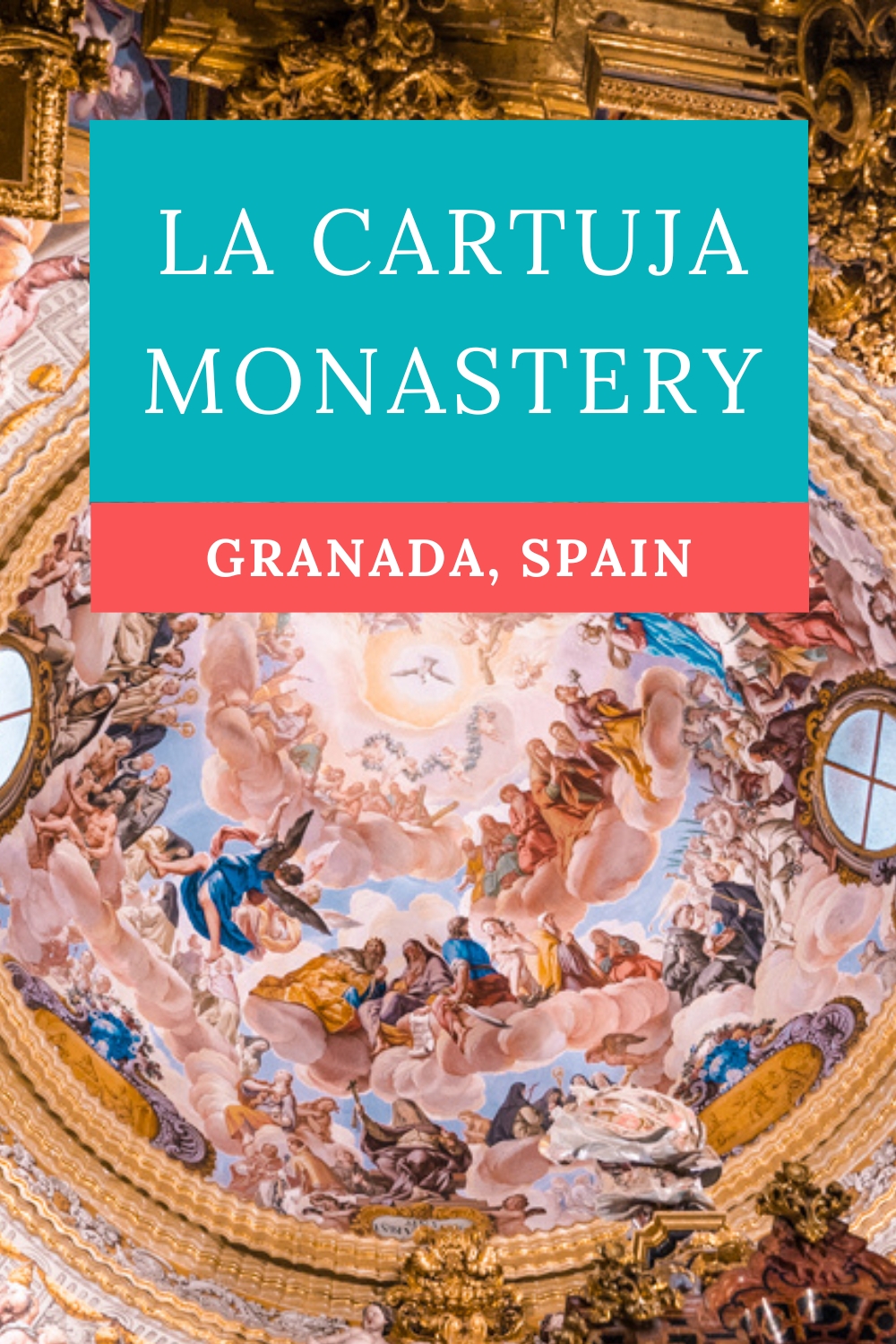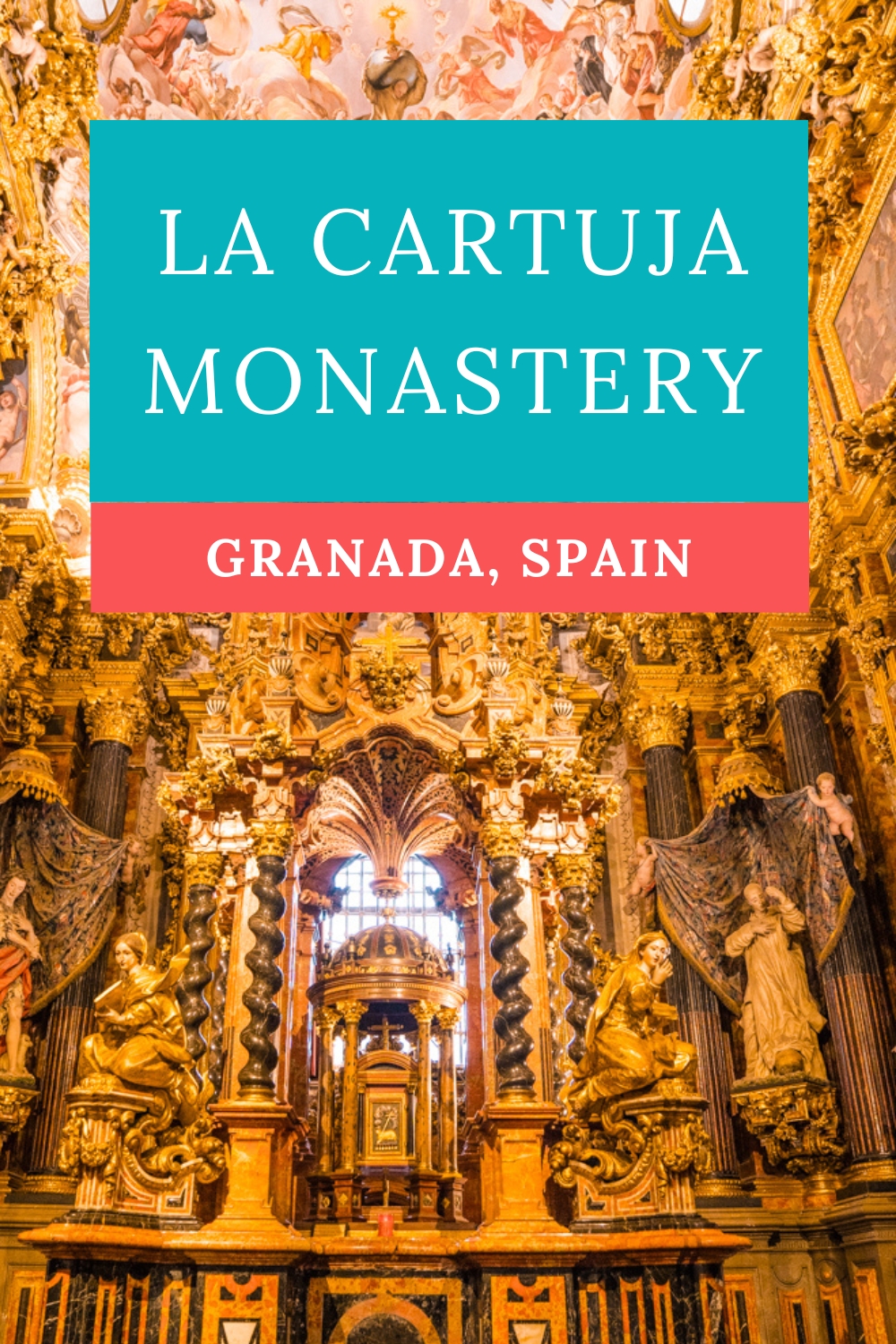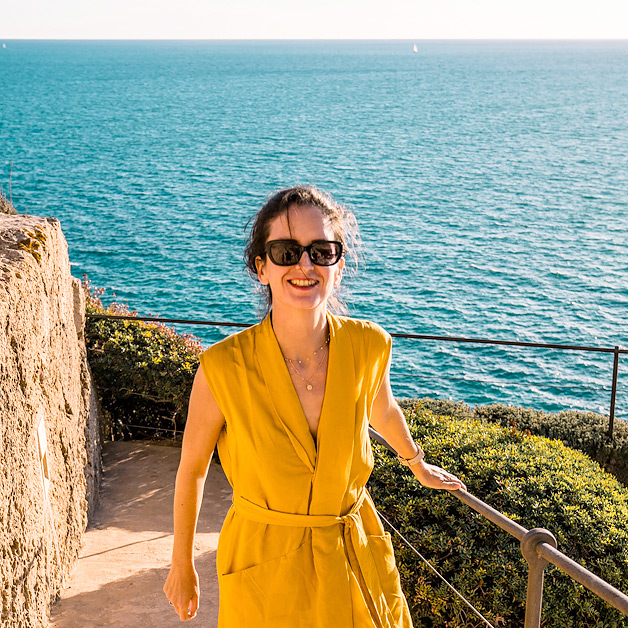The La Cartuja Monastery, known as the Monastery of Nuestra Señora de la Asunción, stands as a remarkable testament to Spanish baroque artistry.
Some may even go as far as calling it a Baroque Masterpiece.
As I visited in person a month ago, I can confirm what they say is true – the architectural splendor and artistry make this modest-looking monastery a true masterpiece.
The monastery dates back to the 16th century and is one of those little-known gems you might not encounter on any itineraries for Granada.
Why?
It’s certainly not because it’s not worth visiting, quite the opposite.
The Cartuja Monastery is often overshadowed by the more known sights & historical locations like the famous Alhambra, but also the Sacromonte Monastery (Abadia de Sacromonte) which is much closer to the old part of the city (Albaicin). In addition to Sacromonte, there is also a beautiful monastery in the city called Monasterio San Jeronimos.
If you’ve been wondering whether to add it to your trip itinerary, this article will answer all the questions you might have, and give you plenty of reasons to pop there for a visit!
Video Tour: La Cartuja Monastery
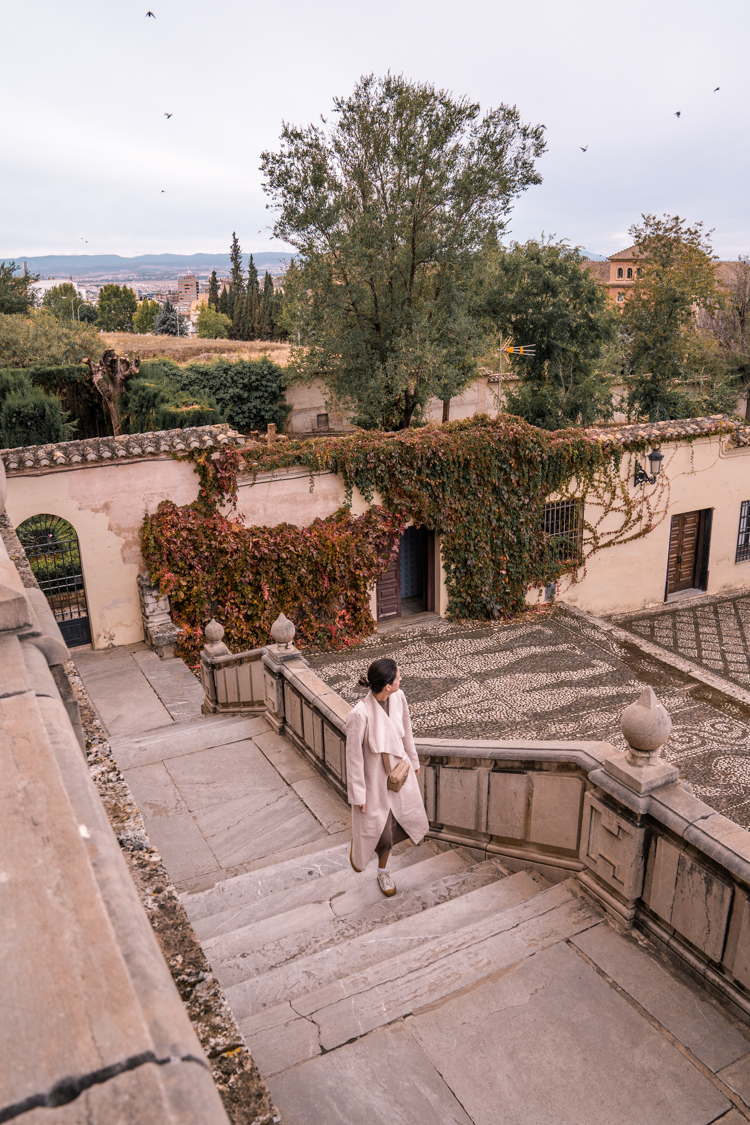
La Cartuja Meaning
La Cartuja would translate as Carthusian Monastery. The straight translation of the word to English would be ‘a charterhouse’.
La Cartuja Monastery History
Gonzalo Fernández de Córdova, also known as the Great Captain, generously donated the land for the construction of the Royal Monastery of Nuestra Señora de la Asunción de la Cartuja.
Originally intended as his family mausoleum, the chosen location was Aynadamar or Fuente de las Lágrimas, near Alfacar. However, the founding monks, originally from the Monastery of Santa María del Paular, decided to change the site, which displeased the Gran Capitán, causing him to abandon the project.
Despite these challenges, the construction of the monastery began in 1506 and endured for three centuries before reaching its completion. As a result, the magnificent architecture showcases an eclectic blend of styles, including Late Gothic, Renaissance, and Spanish Baroque.
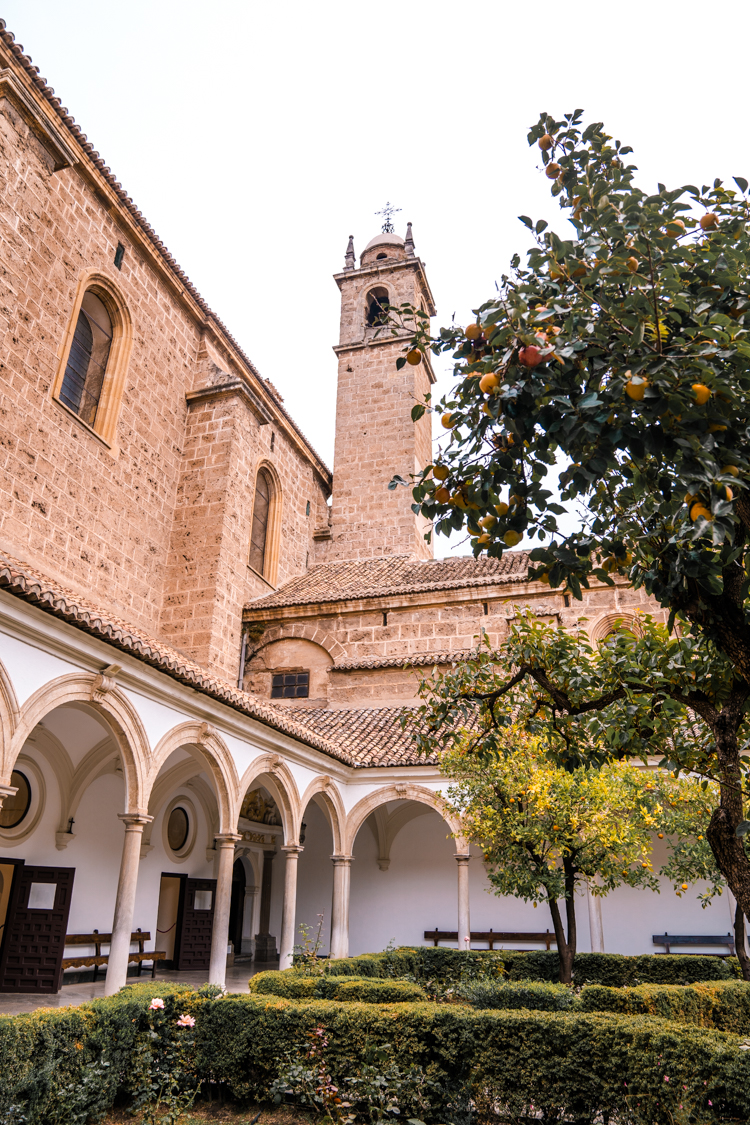
Renowned artists of the time, such as Diego de Siloé, José de Mora, the García brothers, Antonio Palomino, and Hurtado Izquierdo, adorned the interior with their masterpieces.
For centuries, the Cartuja Monastery served as the dwelling place for Carthusian monks until their expulsion in 1835. Unfortunately, the cloister and the monks’ cells were destroyed in 1842, but the legacy and beauty of this monumental work still captivate today.
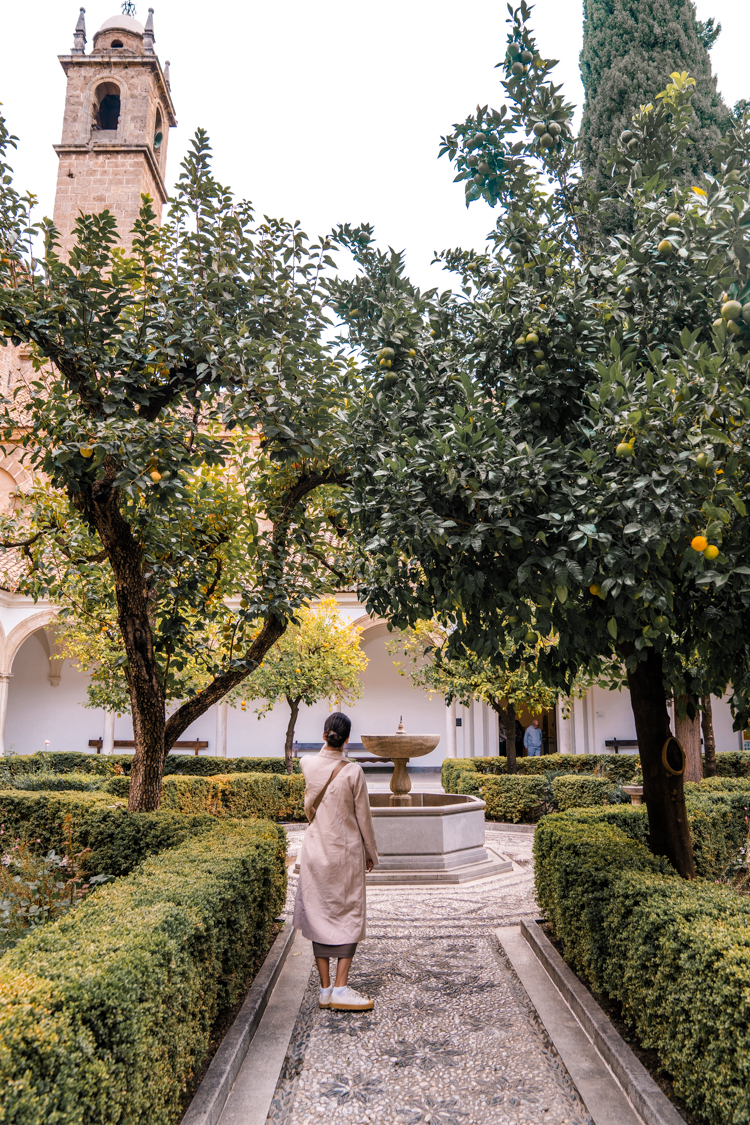
What to See in La Cartuja Monastery, Granada
There are several stunning locations in the monastery, but my favourite by far was the church.
The visit begins in the cloister, a serene sanctuary adorned with orange trees, a flowing fountain, and aromatic plants.
The rooms alongside the cloister serve various purposes, from Reflectory to the Chapter Room, with impressive religious art displayed all around the walls.
The Cloister
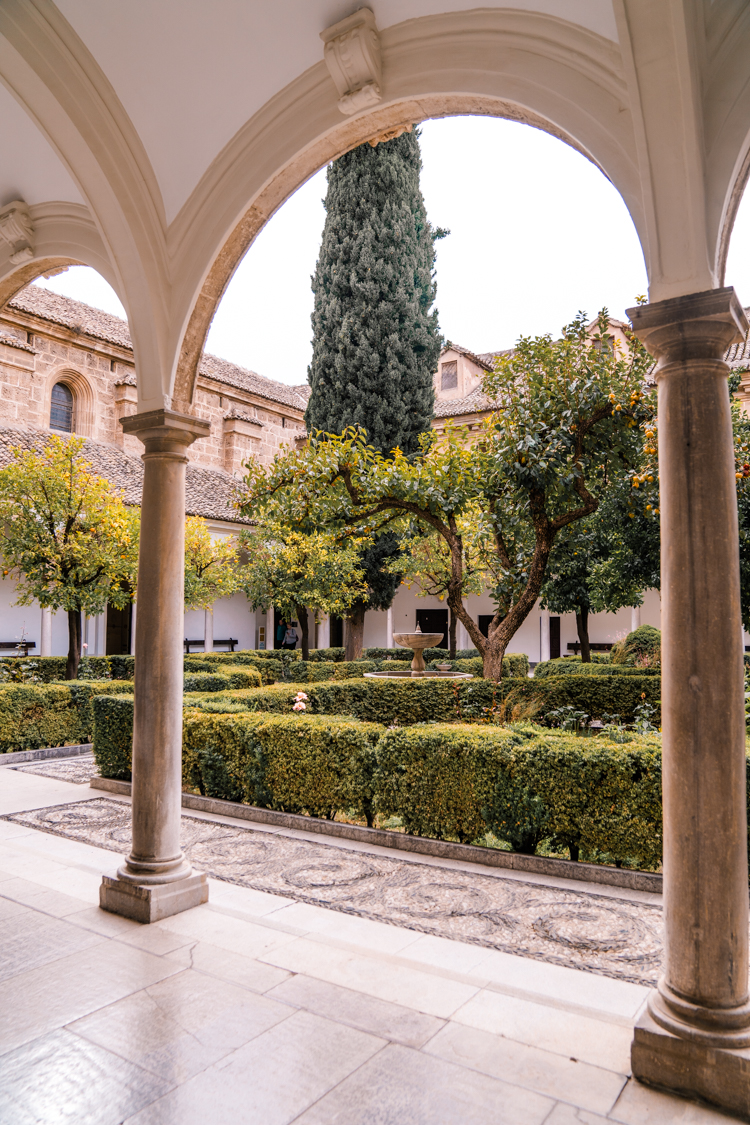
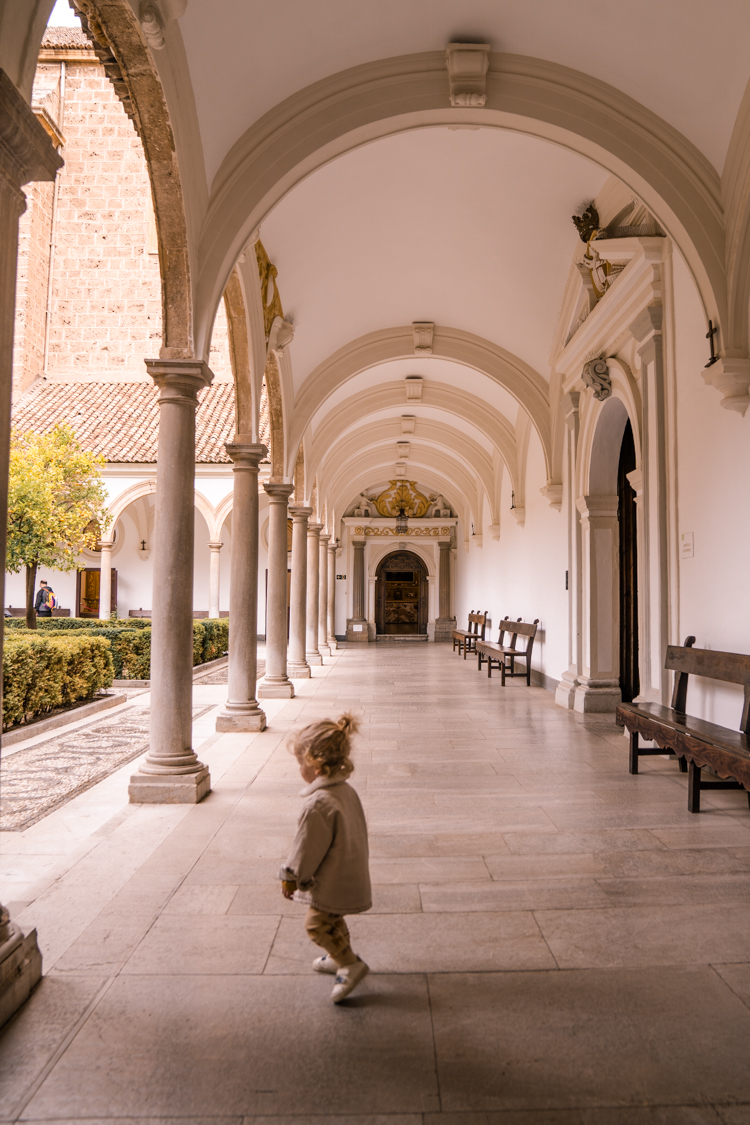
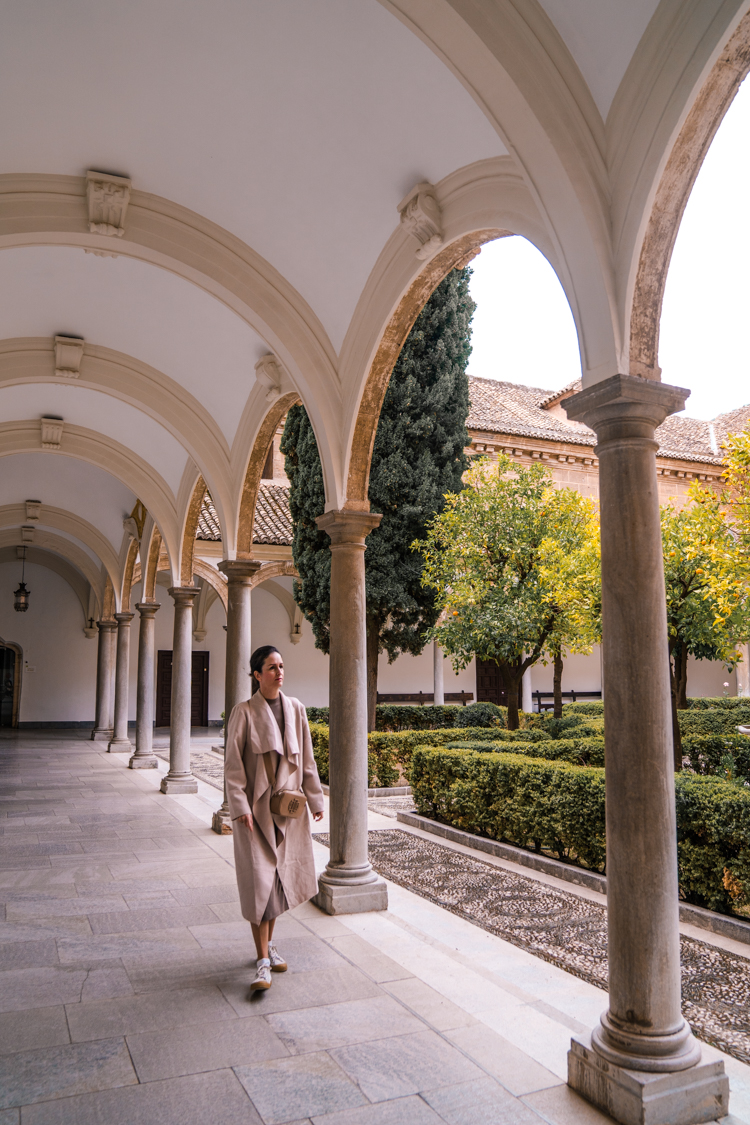
The Church
The main treasure of the monastery is its Church.
As you walk through a modest door that is beautifully contrasting the intricate opulent interior, you enter a breathtaking religious site that can easily compete with the majestic cathedrals of Seville or Granada.
Carthusian churches follow a distinctive design, deviating from the conventional cross-shaped structure. First, you enter the ‘Part of the Faithful’, a small entry space, followed by the choir of lay brothers.
This part of the church is separated from the friars’ choir by two beautiful altars and a stunning intricately crafted door. The dark wood on the door offers a stunning visual contrast to the intricate ceiling and the gold radiating from the altar.
The Fathers’ Choir is more spacious and lighter, as it’s the place that the monks use for mass and prayers.
The Main Altar hides a secret too – Sancta Santorum that’s hidden behind it, with its beautiful marble baldachin and stunning celestial dome painted by Antonio Palomino.
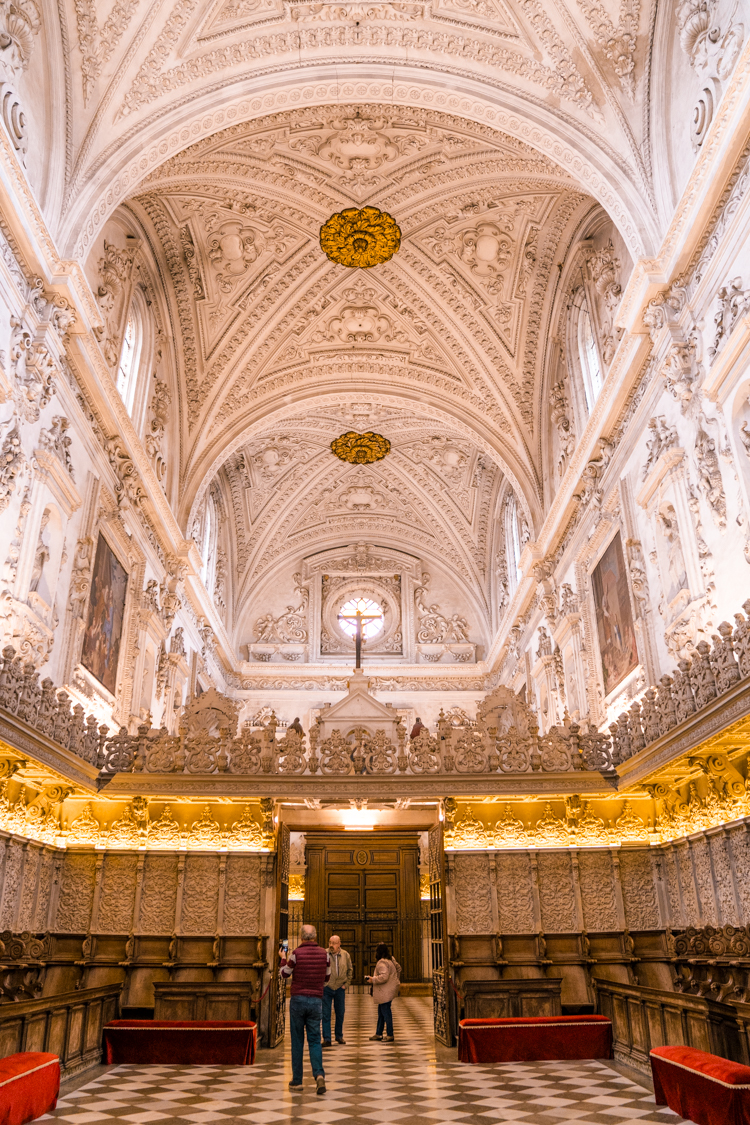
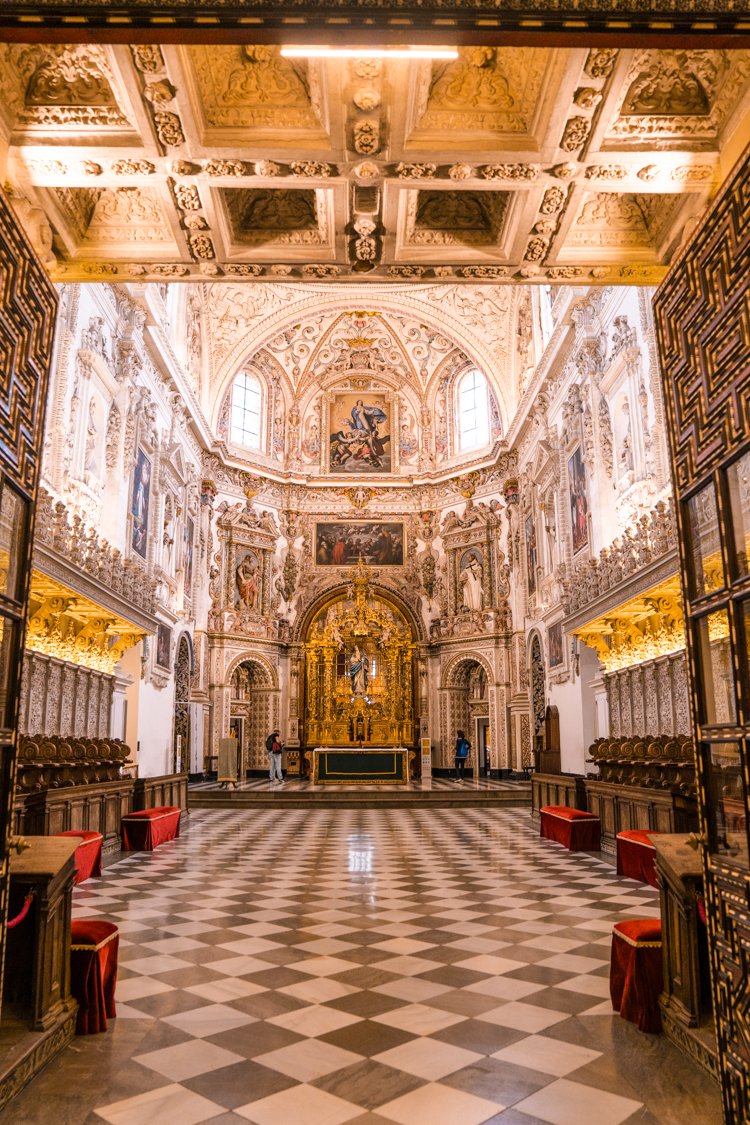
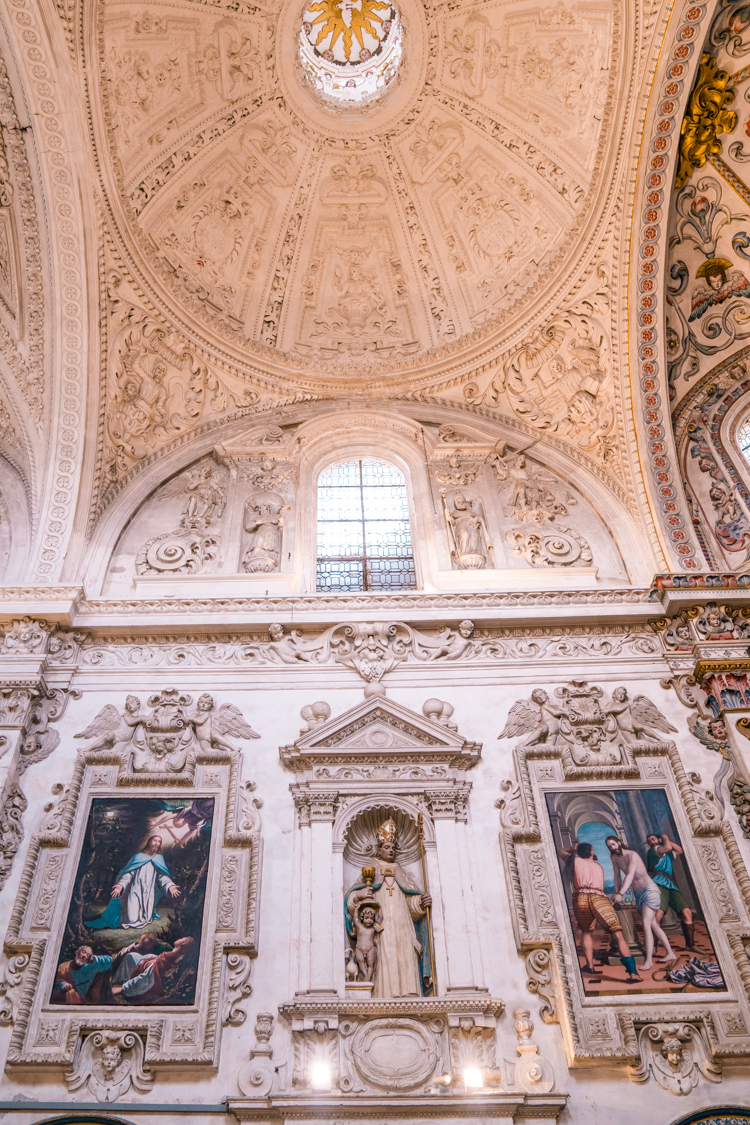
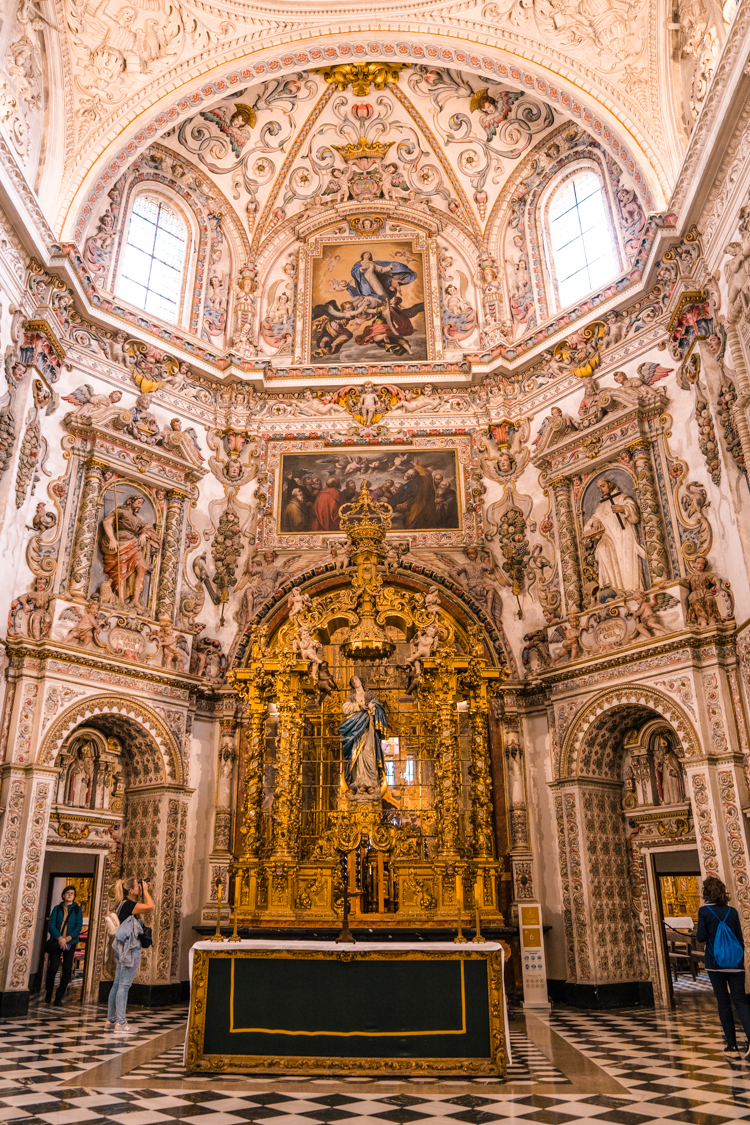
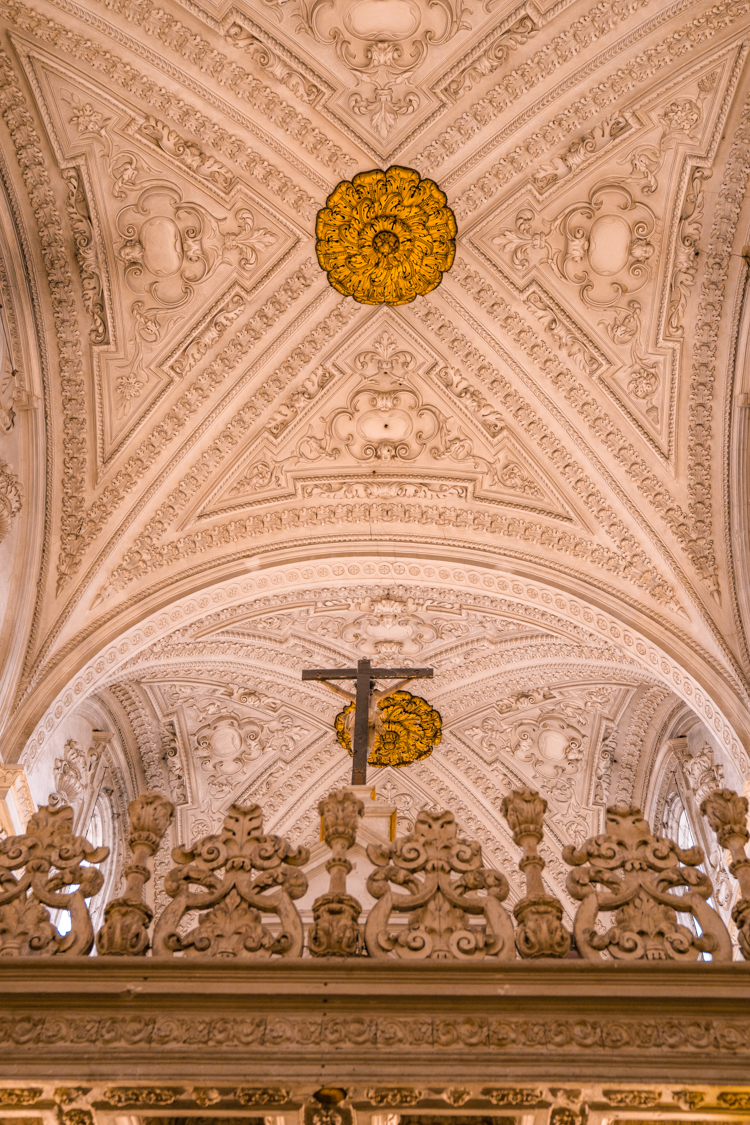
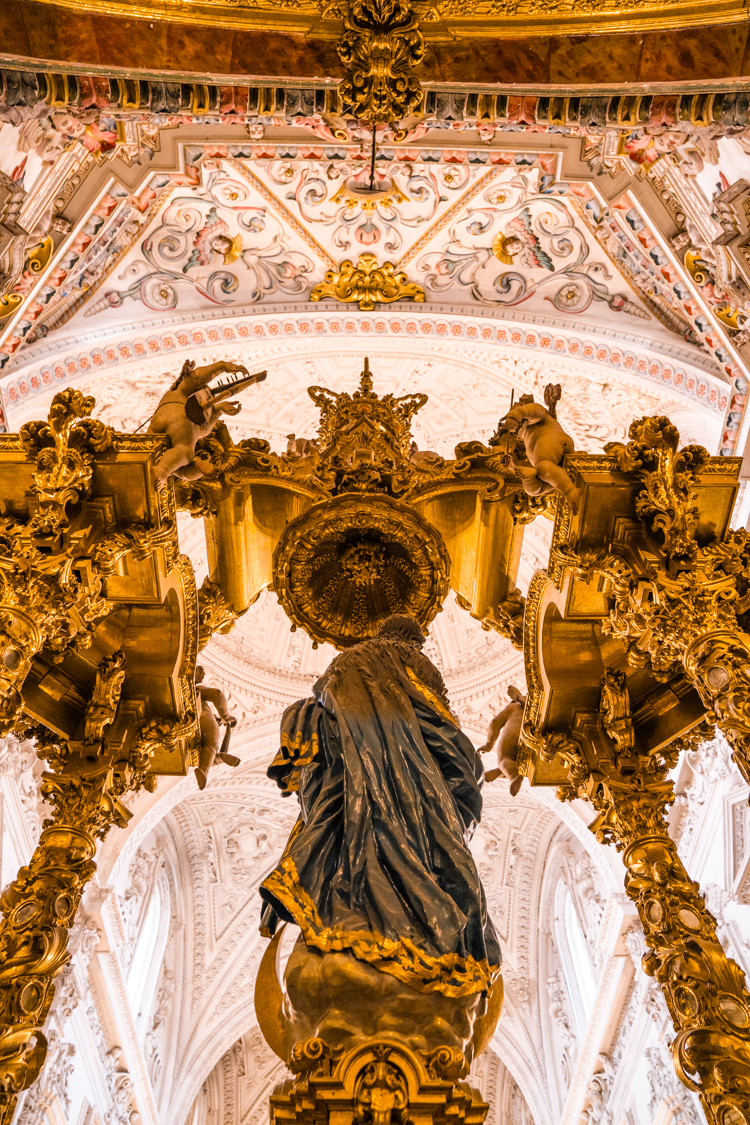
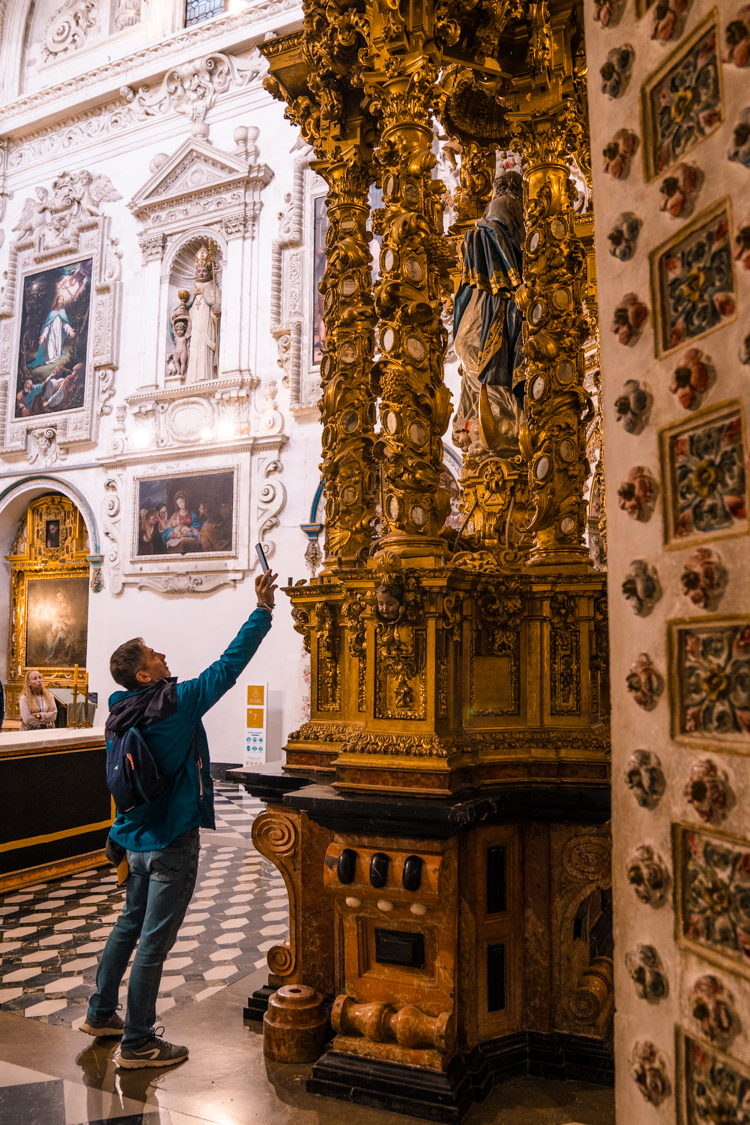
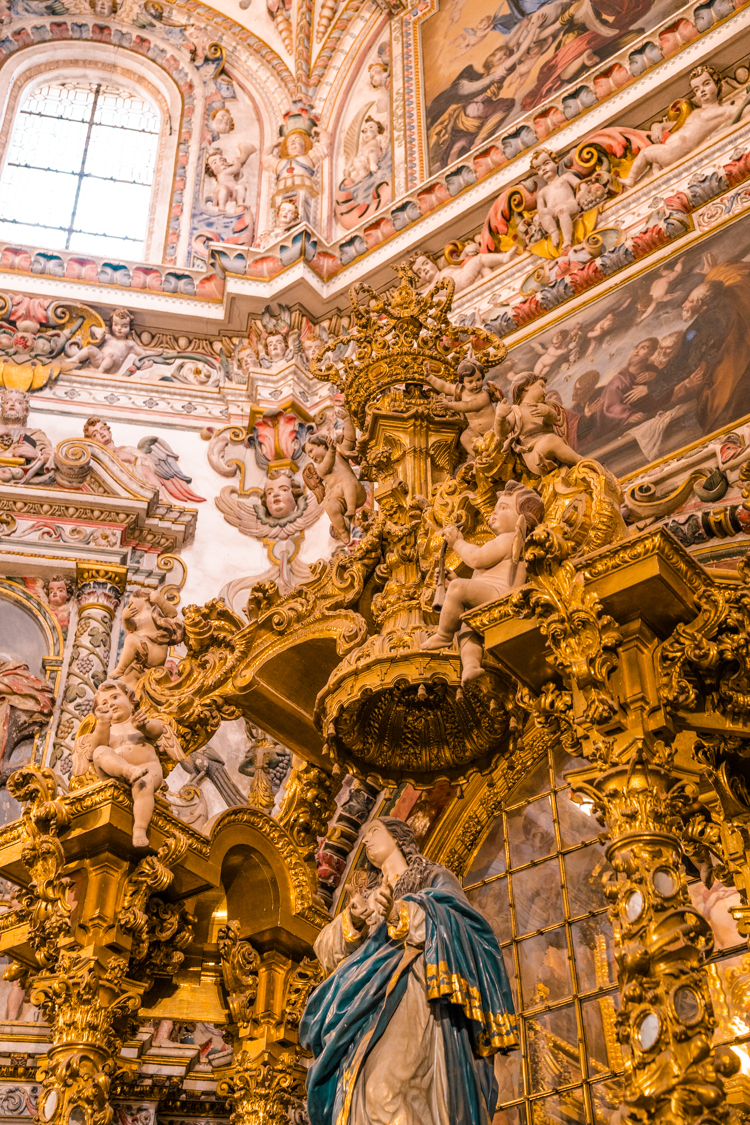
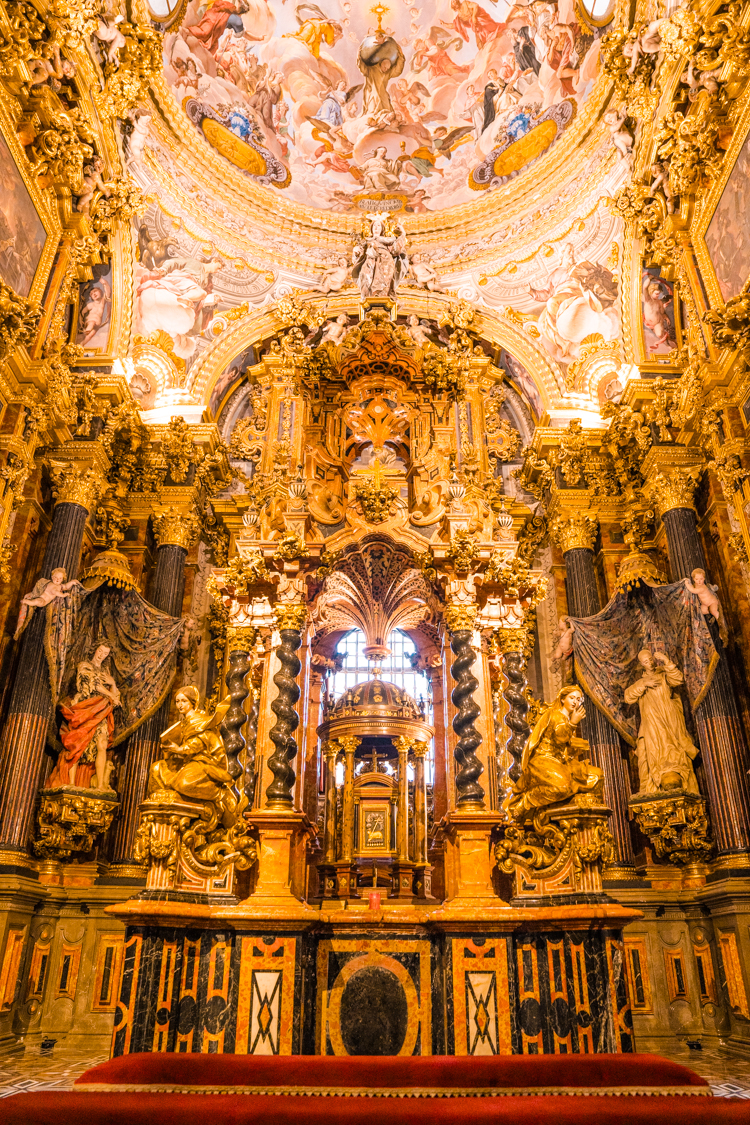
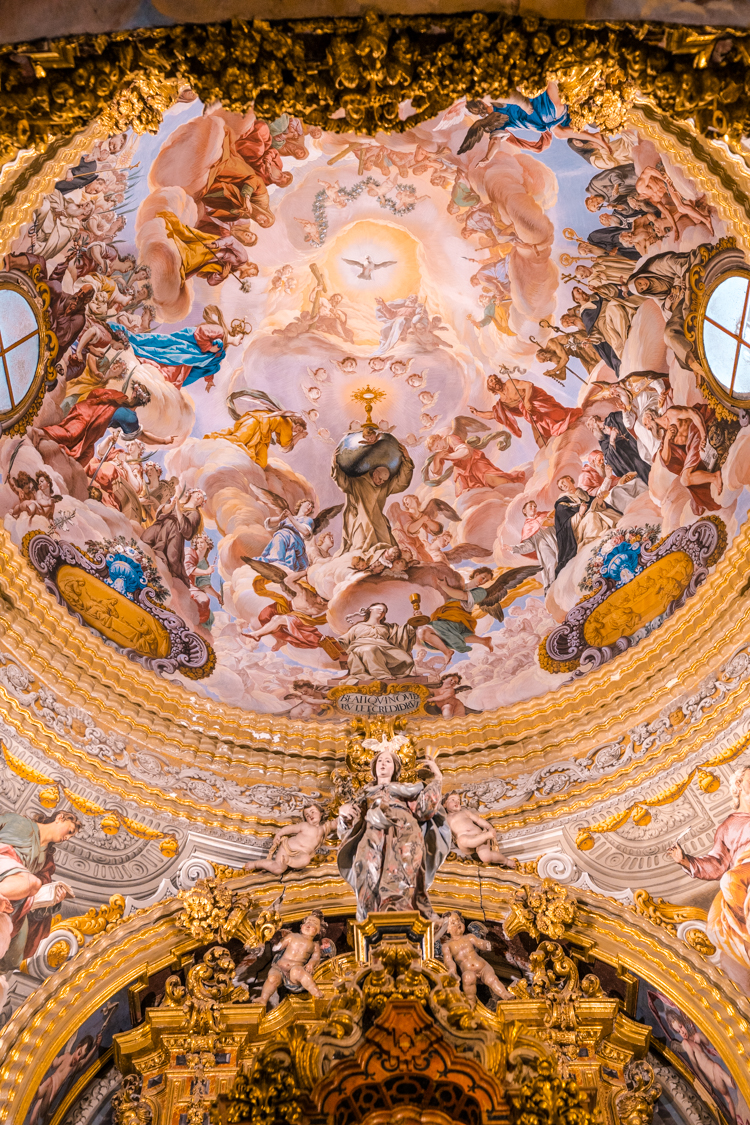
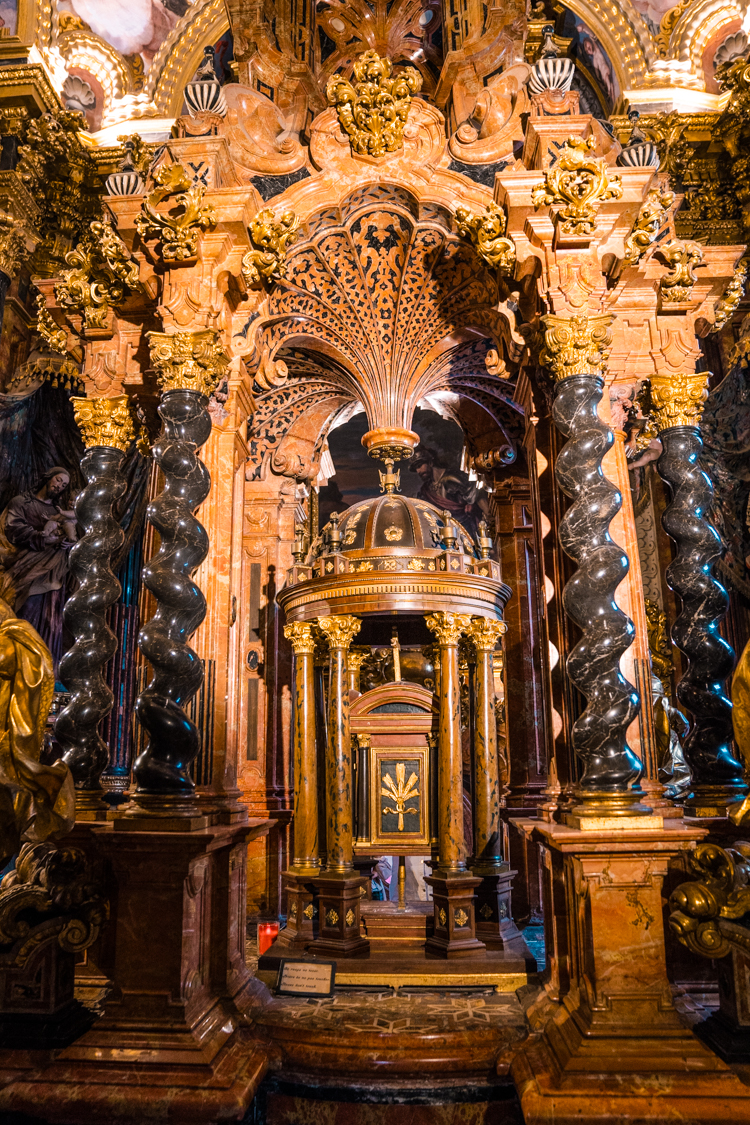
The Sacristy
Dubbed the most beautiful Sacristy in the world (and I certainly agree), this hidden room on the right side of the Altar was possibly even more impressive than the main church building.
I thought I’d seen the impressive beauty of La Cartuja by visiting the church, but little did I know that the Sacristy would make an even bigger impression.
The Sacristy is the place where the monks prepare for the community mass, one of the most sacred parts of the church. Among its many priceless art pieces is the inlaid chest of drawers that stores ornaments and religious objects for the masses. They were carved by Jose Manuel Vázquez who took 34 years to finish them.
The monochrome floor just elevates all the intricate Baroque details on the walls and the stunning paintings on the ceiling. Truly breath-taking!
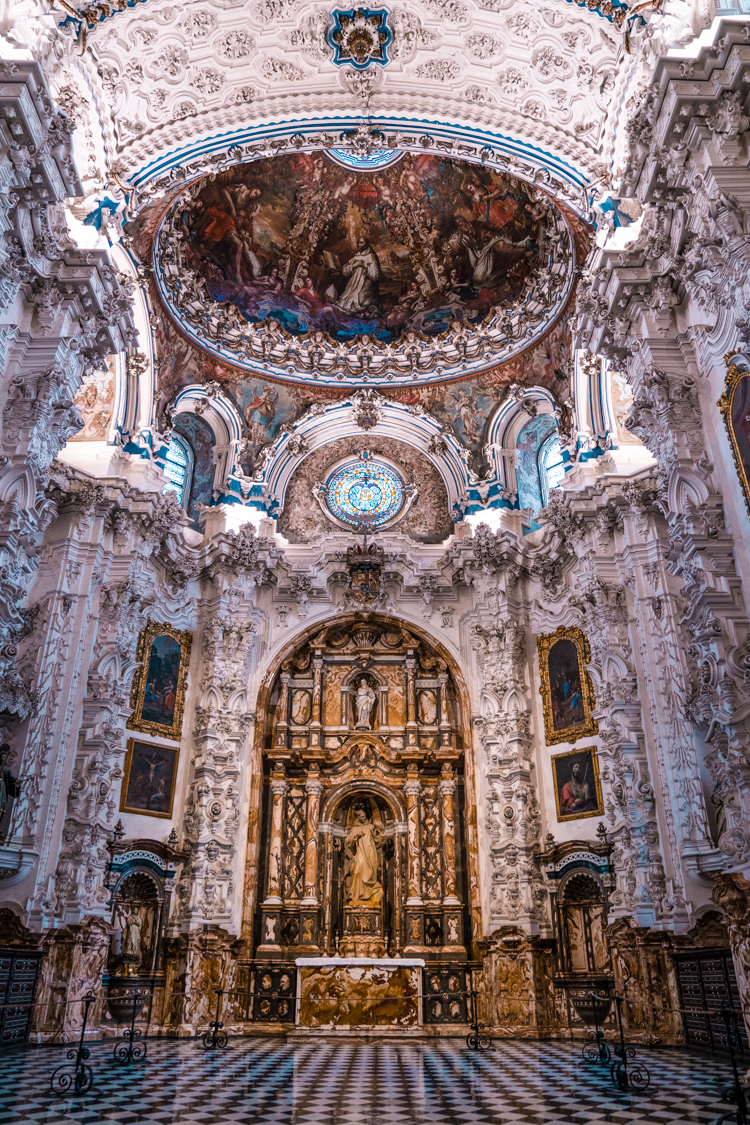
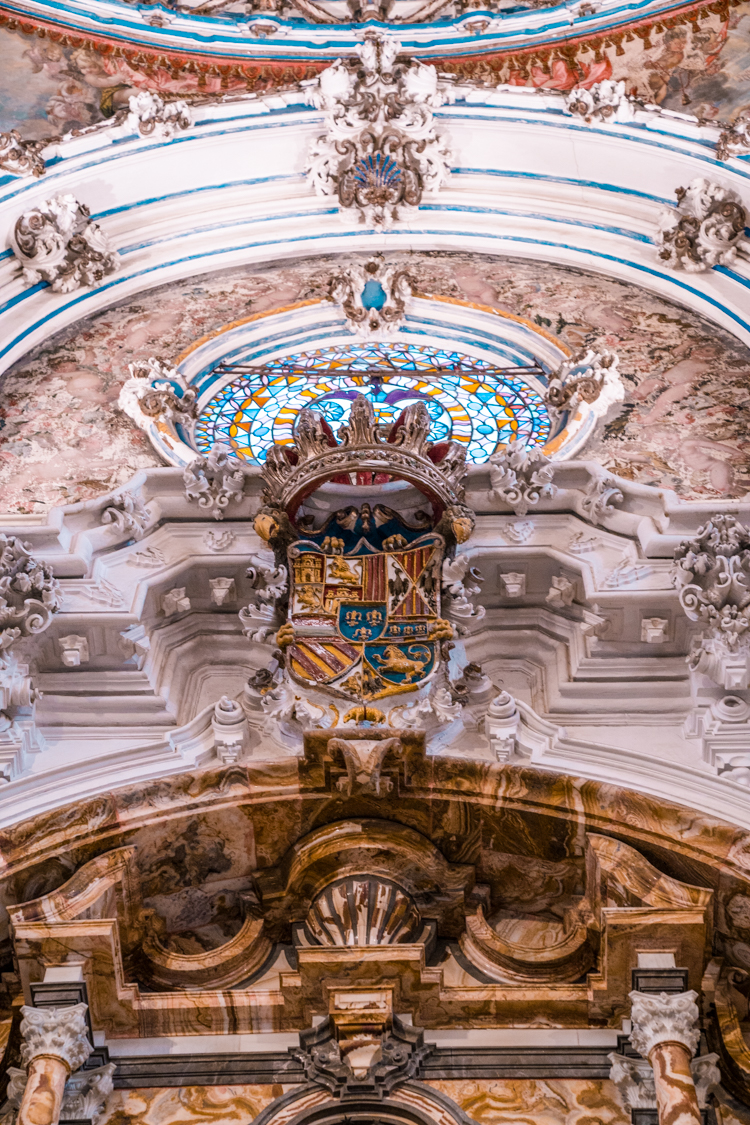
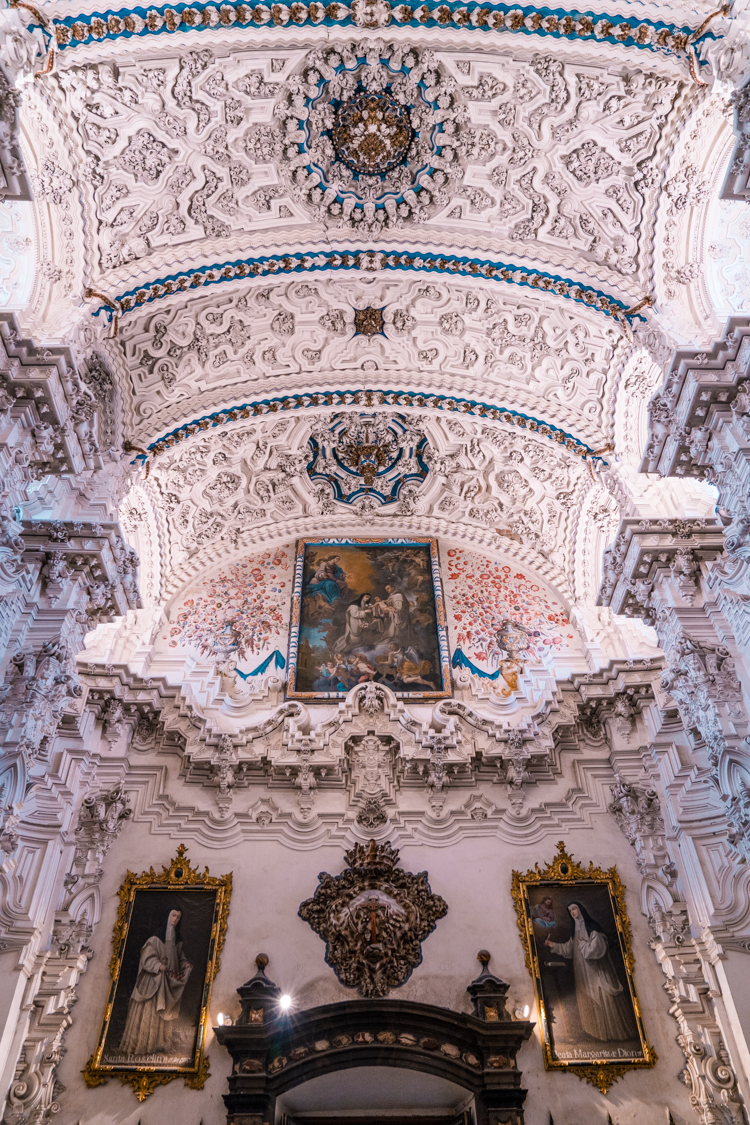
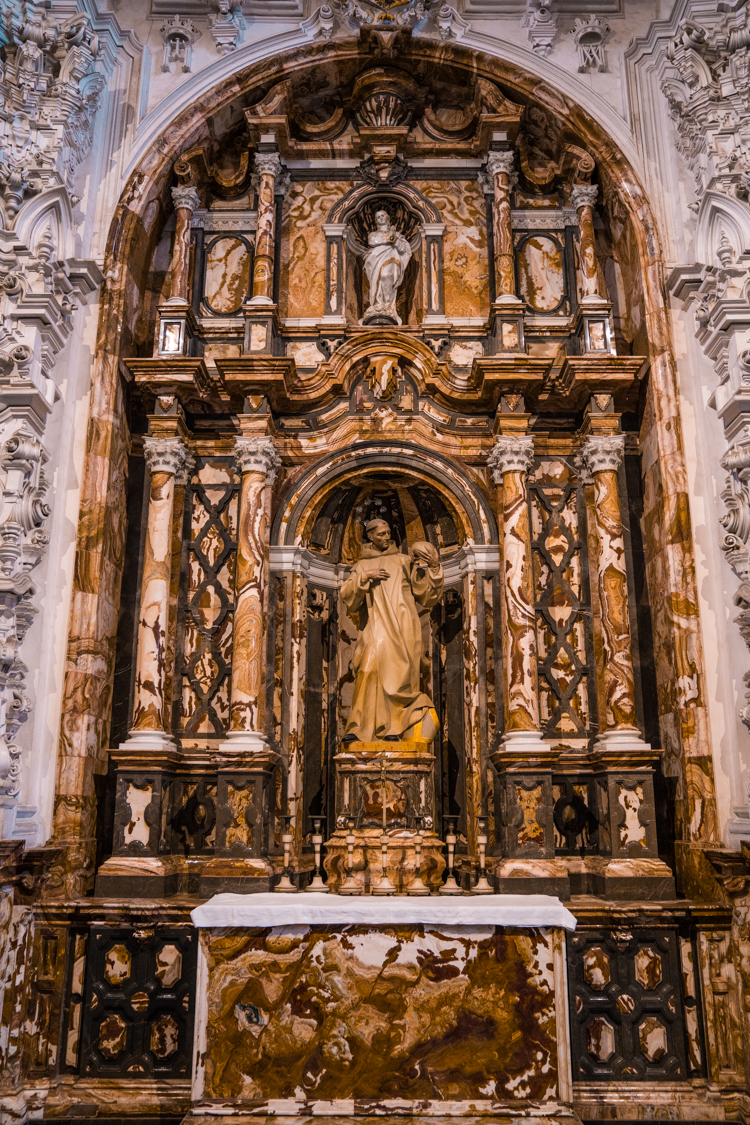
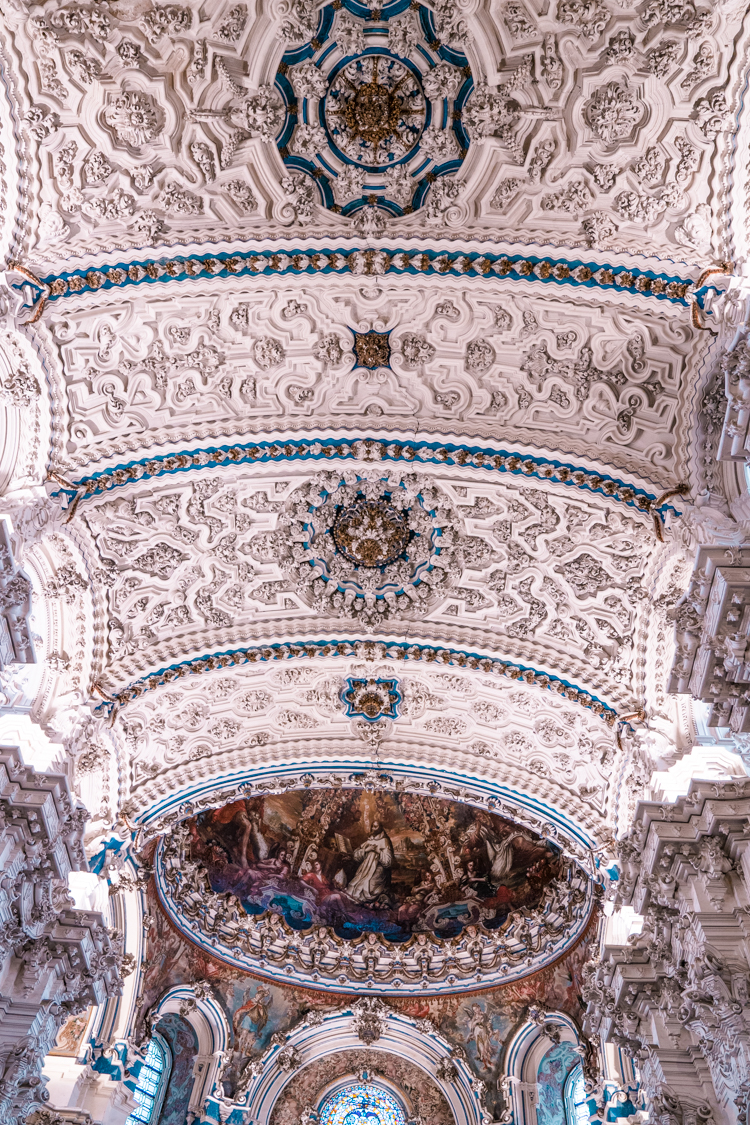
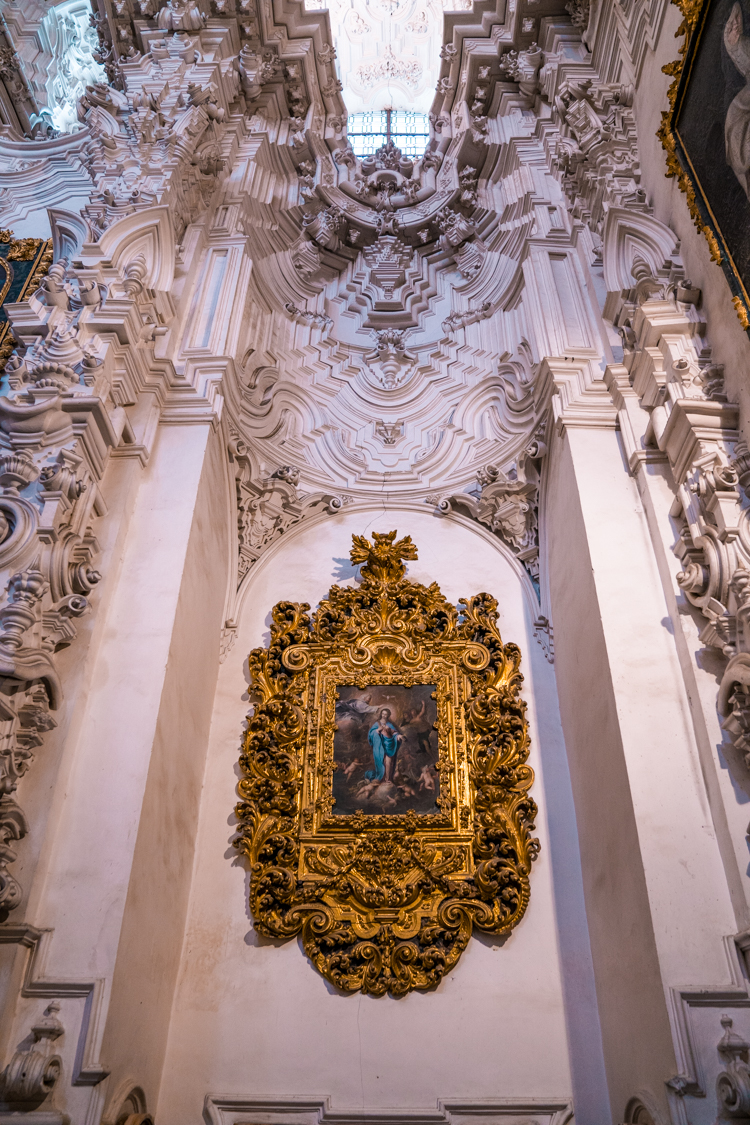
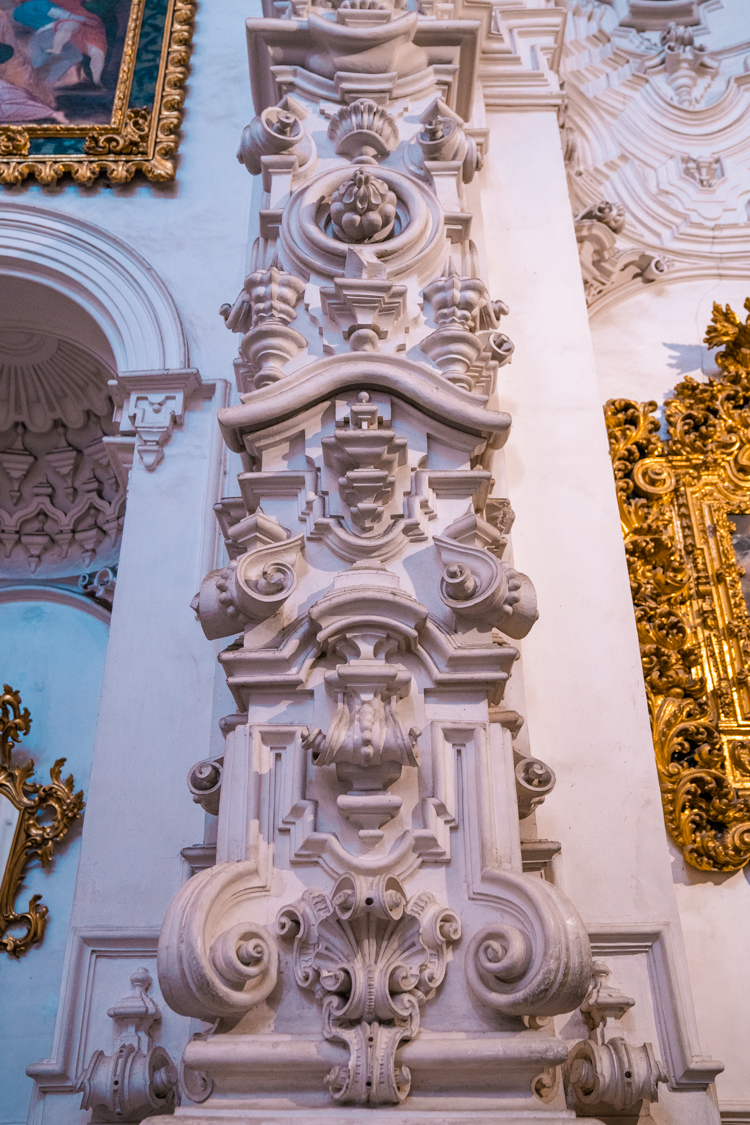
Final Words
La Cartuja may be a little off from the main historical gems of Granada, but it’s certainly a place you don’t want to miss.
The serenity of the pretty cloister infused by the smell of orange trees and the intricate Baroque architecture of the church and the Sacristy offers a welcome refuge from the tourist crowds in the center, and an opportunity to experience Granada off the beaten path.
And that’s an offer you can’t refuse!
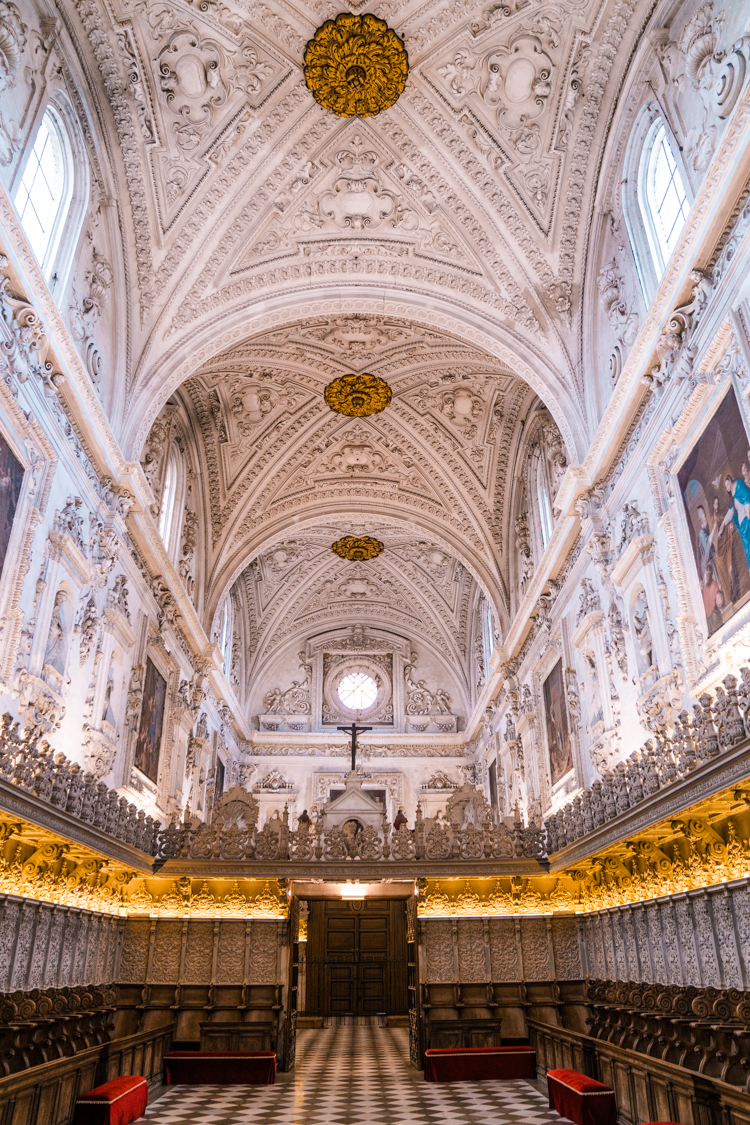
La Cartuja Monastery Tickets & Visiting Hours
You can buy the tickets to the monastery online on their official website here.
Bonus Tip: Get the tickets ‘Granada Christiana’ which will give you a discounted rate to visit the most important religious monuments in Granada (St Jeronimo Monastery, Sacromonte Monastery, Granada Cathedral & the Royal Chapel of the Cathedral).
Ticket Prices
6 euros for adults, and children under 12 years old are free. Students and seniors are 4.50 euros. These prices are valid from Jan 2024 (for 2023 they are 1 euro cheaper).
Opening Hours
Sunday to Friday from 10 am to 6.30 pm and Saturdays 10 am to 12.15 pm and 3 pm to 5.30 pm.
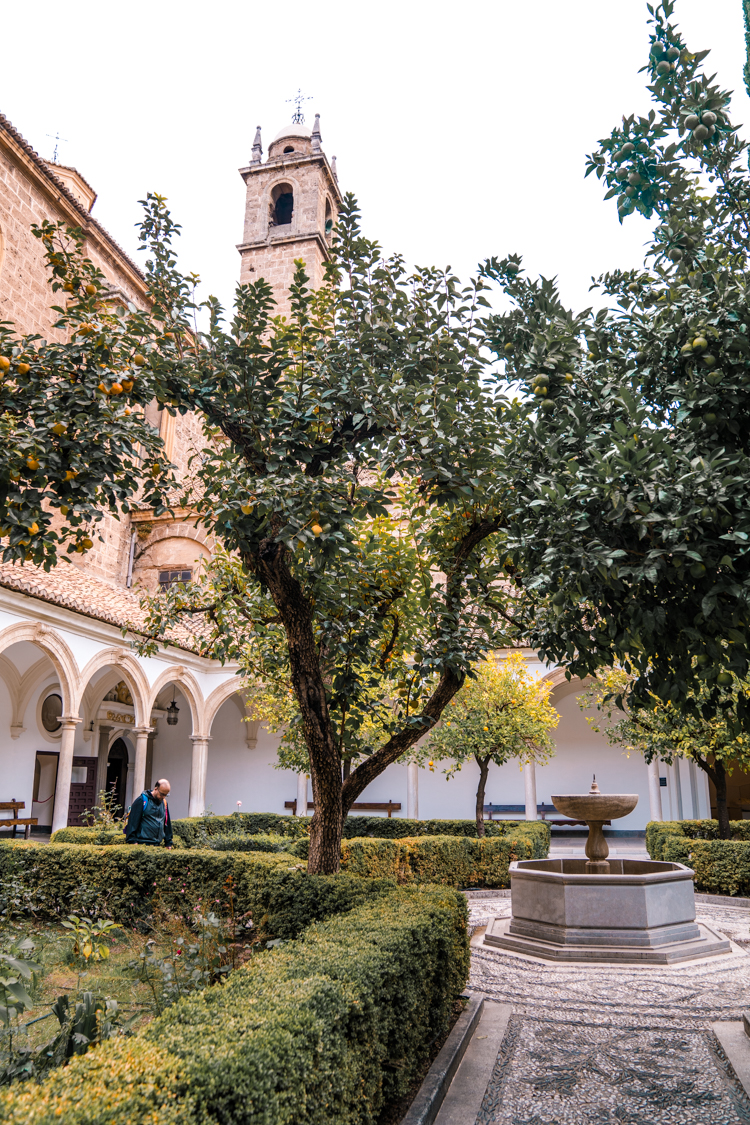
La Cartuja Monastery Location
You can see the location on the map below, the address is: P.º de Cartuja, s/n, 18011 Granada
How to Get to La Cartuja Monastery
By Bus: line U2, U1 and U3, and 8 (campus de la Cartuja) have stops at the monastery, also the small red tourist train will stop here by the main road.
By Car: there is limited parking within the courtyard of the monastery, so you can get there easily by car too. The address for your GPS is above the map.
By Walking: I actually walked back from the Monastery to Albaicin, it may sound crazy far but it wasn’t. It was about 30 minutes pleasant walk through the upper part of Albaicin, and you can get direction by using google maps and setting your transport to walk.
By Taxi: on the way to the Monastery I took a taxi from Plaza St Ana in Albaicin, which was around 7 euros.
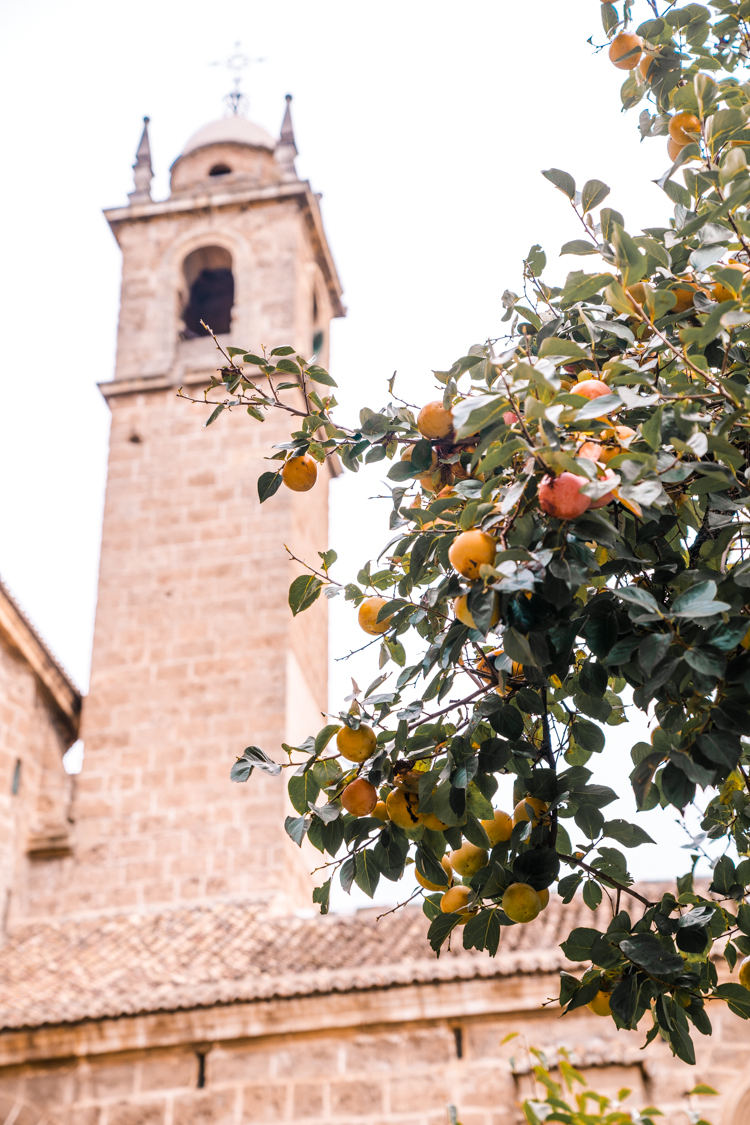
Cultural Visit Rules for La Cartuja Monastery
- photography is allowed, but no flash, tripods or selfie sticks (may I add my personal favourite – recording tiktok videos is probably not a good idea either)
- during prayer, cultural visits are not allowed
- remain silent and dress appropriately
- no food or drinks to be consumed inside the monastery
- switch off your phone and take off your hat as you enter the monastery
- smoking is forbidden and so is entering with pets (yes, even small handbag dogs are still considered pets)
Explore More: My Favourite Places in Granada
Science Museum in Granada: A Must See
The Majestic Granada Cathedral and The Royal Chappel
Casa del Chapiz, Granada: A Photo Tour
Carmen de la Victoria, Granada: Tranquility Meets History
A Masterpiece Covered in Gold: Basilica San Juan de Dios, Granada
The Queen’s Home: Palacio Dar al-Horra, Granada
Carmen de los Martires, Granada
Sacromonte Caves Museum in Granada: Worth a Visit?
Best Ways to Explore Granada
6 Best Albaicin Walking Tours: Local Expert Tips
7 Best Walking Tours in Granada: Expert Tips
7 Best Granada Bike Tours: Tips & Tickets
5 Best Sacromonte Walking Tours in Granada
Traveling Later? Pin This to Your Trip Planner
